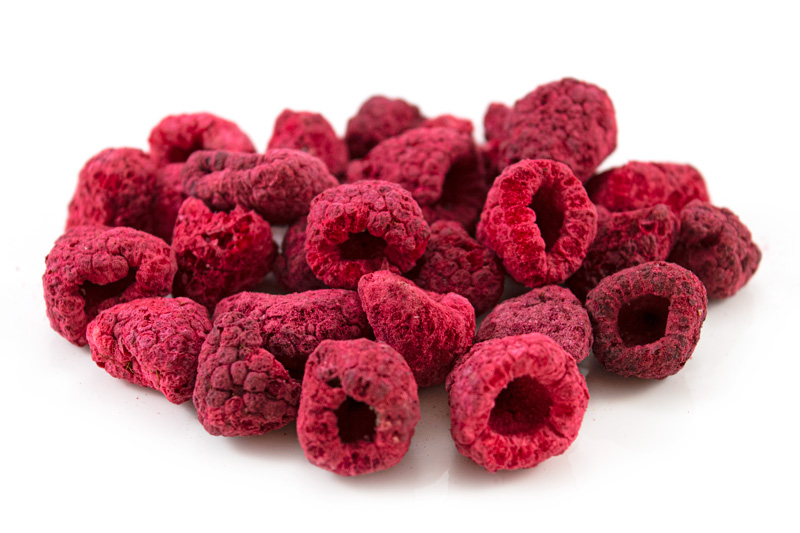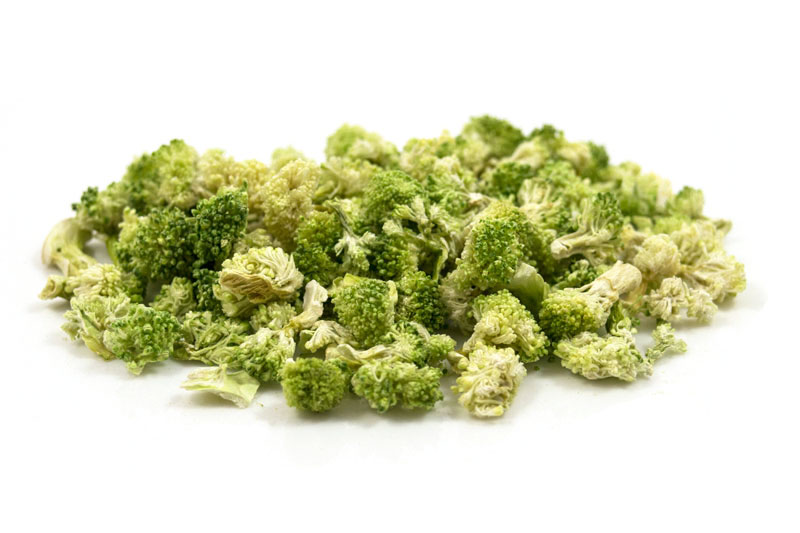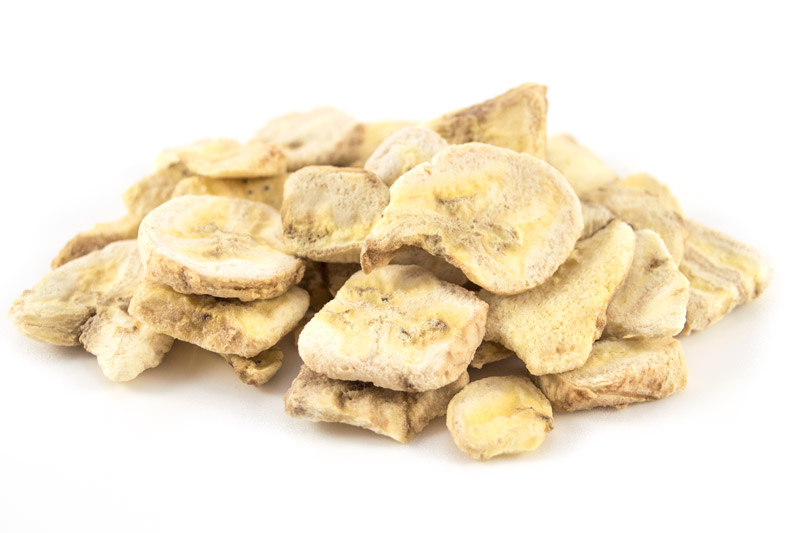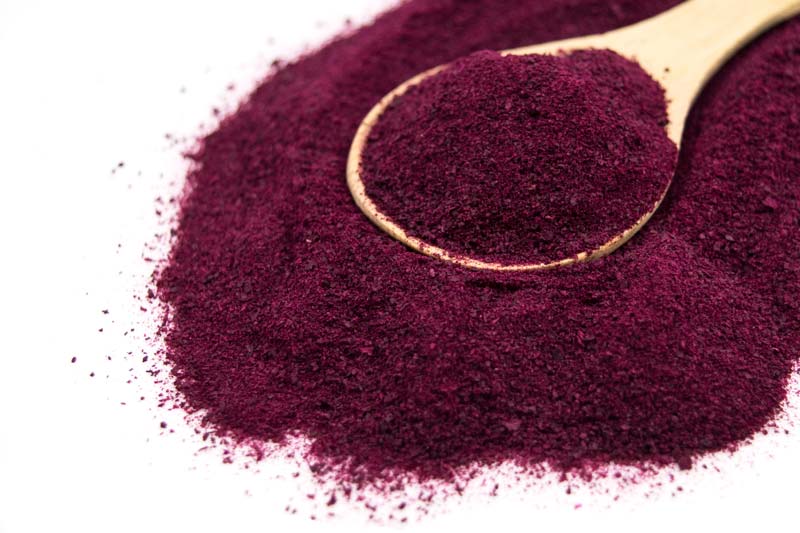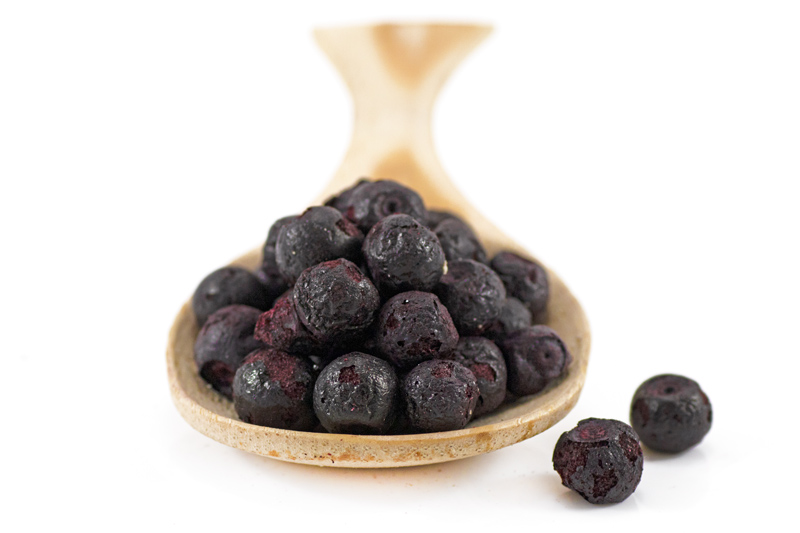The wonderful, nutritious world of freeze-dried fruit & veg
We all know that fruit and vegetables are fantasticaly good for us, and that we should all eat more, to ensure we’re getting all the vitamins, minerals, fibre and other nutrients we need. However, very often if you go shopping for fresh fruit & veg on a Monday, and don’t manage to finish everything quickly, your fresh produce looks in a very sorry state by the end of the week! Dried products have always been available, but when you dry fresh food in the conventional way, which usually means using an oven, most of the nutrition can be lost as the heat causes the vitamins and other nutrients to degrade – and the flavour can be radically different too. But because of the way the freeze-drying process takes place, it means the nutrition and taste are pretty much unchanged – and the only huge differences are that the weight is much lighter (because the water has gone), and as a direct result, the shelf life has been massively extended, sometimes by many years.
Let’s take a closer look at the magical world of freeze-drying….
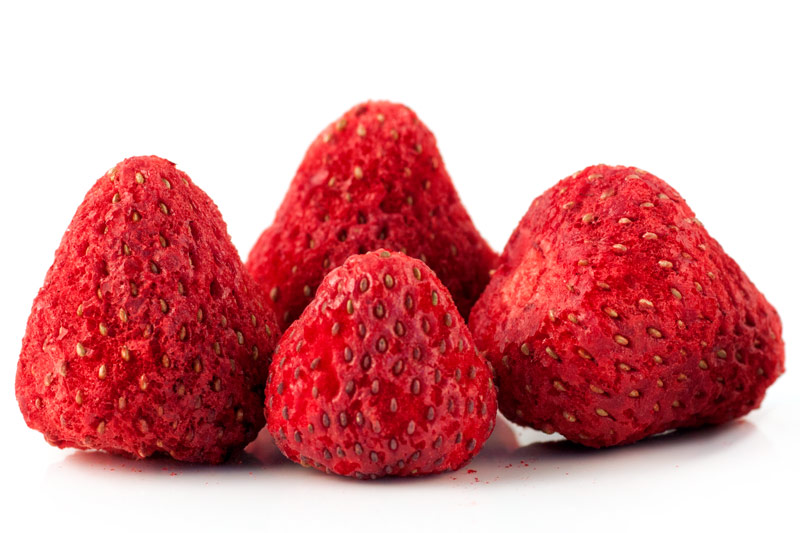
Freeze-drying is also known as lyophilisation, and involves food being placed in huge, sealed pressure chambers, where it’s frozen rapidly. The pressure is then lowered before all the water is then removed by a process of sublimation. This leaves the product looking almost unchanged, with its structure looking virtually the same as before. It’s a common misconception about freeze-drying that it involves buckets of chemicals being added to everything, but it’s simply a process that involves changing the temperature and pressure without anything at all needing to be added.
The freeze-drying process tends to have a remarkable effect on food – it makes it crispy! Whereas before something like fresh raspberries were soft, yielding and juicy, afterwards the freeze-dried raspberries have kept their shape but are now light, crispy and crunchy, like a crisp that tastes of a sweet. But unlike sweets, they’re not loaded up with unhealthy refined sugar – they don’t need to be, as they’re in their natural form and taste exactly like the fresh fruit. Other fruits which work particularly well in this crispy form are blueberries, cherries and mango.
A study published in the scientific journal Molecules in 2020 concluded that freeze drying exhibited effective preservation of food’s antioxidant properties.[1] Another study from the same year concluded that this type of dehydration method is the best to preserve nutritional qualities when compared to other dehydration methods.[2] One of the best things about freeze-drying is that it basically turns ‘fresh’ fruit and veg into store cupboard ingredients, so you can add some freeze-dried broccoli to a soup or a casserole without needing to pop out to the supermarket, and ensure you’re getting virtually all the nutrition of the freshly-harvested vegetable, or you can stir a spoon of freeze-dried beetroot powder into a smoothie and get pretty much the same nutrition as if you’d just whizzed up one of the fresh root veggies.
There’s a dizzying array of freeze-dried goods to choose from – it’s an Aladdin’s cave for foodies! Why not try our delicious freeze-dried banana slices, or our nutrition-packed freeze-dried pomegranate seeds? Or maybe you’d like to top your homemade pizzas with our freeze-dried black olive pieces and our amazing freeze-dried mozzarella cheese? There’s even some delightful freeze-dried caramelised red onion pieces to scatter on a salad (or just eat straight from the packet!) Our freeze-dried lemon powder is perfect for lemon drizzle cakes, and our freeze-dried rhubarb powder is absolutely delectable sprinkled over yoghurt and desserts. Our most popular product in the freeze-dried range, though, is lovely red strawberries, which are available in whole, sliced or powdered form. There’s even now an organic version!
None of our freeze-dried powders contain any artificial additives to make them flow. For this reason, occasionally clumping may occur, especially in products with a higher content of natural sugars. This can be fixed by bashing lightly with a rolling pin, or whizzing it up briefly in a food processor. Many of our competitors add maltodextrin to their freeze-dried powders, to help them flow more smoothly. We refuse to add it, as we wanted to offer a 100% natural product – and we were aware of medical studies like the one from 2018 which concluded maltodextrin can contribute to gut disease susceptibility and can put subjects at risk of developing inflammatory bowel diseases.[3] Or the one which found that consuming maltodextrin encouraged the harmful bacteria E. coli to proliferate inside us, which is a major factor associated with the onset of Crohn’s disease.[4] Or the one in 2014 which concluded it promotes salmonella.[5] Or the 2019 academic report titled “Maltodextrin, Modern Stressor of the Intestinal Environment”, that found it promoted intestinal inflammation leading to metabolic abnormalities in the general population.[6] Keep it natural, we say, and we hope you agree!
[1]https://www.ncbi.nlm.nih.gov/pmc/articles/PMC7179396/
[2]https://www.ncbi.nlm.nih.gov/pmc/articles/PMC7022747/
[3]https://www.ncbi.nlm.nih.gov/pmc/articles/PMC6369223/
[4]https://www.ncbi.nlm.nih.gov/pmc/articles/PMC3520894/
[5]https://www.ncbi.nlm.nih.gov/pmc/articles/PMC4084946/
[6]https://www.ncbi.nlm.nih.gov/pmc/articles/PMC6409436/


